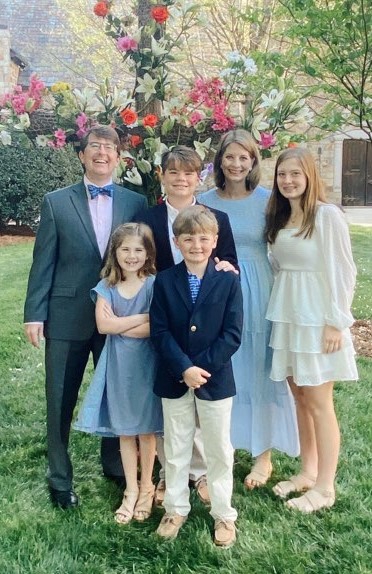I earned a settlement for the maximum available insurance amount in a Greenville car accident case where our client was found at fault by the police. I'll detail the key aspects of how I handled it, but this is what it boiled down to:
- I proved the police report wrong with surveillance video from a nearby business showing the crash, interviews of witnesses at the business that taped it, an interview with a witness who reached out to the victim's family on Facebook, and an accident reconstructionist expert I hired
- I maximized the amount my client could get in the settlement, beyond coverage designations set by the insurance companies. They paid for his injuries from coverage intended to pay for property damage.
Let's dive into the details.
The Crash
My client was Roy. His sweet family found me through an internet search while he remained too debilitated in the hospital to search for a lawyer on his own. Roy is a delight of a man who inspired me with his unceasingly kind, optimistic nature that went a long way in helping him recover from devastating car accident injuries at an advanced age.
At the time of the crash, Roy was 75 and retired after 30 years of service in the maintenance department at Greenville Technical College. On February 2, 2024, at around noon, he drove on Pleasantburg Drive and approached Antrim Drive, a busy intersection in Greenville. Meanwhile, the 17-year-old at-fault driver, who I'll call the defendant, drove his father's SUV from the opposite direction on Pleasantburg Drive. As Roy turned left onto West Antrim Drive, the defendant slammed into Roy’s passenger side, causing a massive crash.
The impact rendered Roy unconscious, unable to tell police what happened. That left the defendant to tell them his side of the story, which the officers bought. Even worse, officers expressed no interest in a surveillance video offered to them at the scene of the crash by the manager of the business located at the intersection. Officers just found Roy at fault and left without reviewing the video.
His family couldn't accept that. Part of that stemmed from a Facebook message his granddaughter got from a witness, telling her it wasn't Roy’s fault. She left her contact info, and Roy’s granddaughter talked to her. Somehow, they also found out about the surveillance video from the business. Roy's granddaughter went to the business and they graciously gave her a copy of the video. She gave it to me for my evaluation.
The Video
The video showed the crash from start to finish. It revealed in living color that Roy started to turn left slowly and carefully through a perfectly clear intersection. Then, the defendant's car came flying towards him from the opposite direction. The defendant slammed into him as Roy straightened his car, finishing the turn.
The video revealed two critical mistakes in the police report. One, the crash wasn't Roy's fault. Two, it looked like the defendant sped over the speed limit of 40 miles an hour, which enhanced our potential to have a case involving punitive damages.
Armed with the video, I began strengthening our case.
How I Built a Case to Prove Roy Wasn't at Fault
While the video was our smoking gun, I didn't assume it would be enough. Not long after I viewed it, the defendant’s insurance company called, making it clear they took a hard line on this case. The adjuster left a message saying Roy was at fault, demanding what evidence I had to refute that. In due time, I made sure he wasn't disappointed.
I contacted the manager of the business supplying the video. He agreed to schedule a time for me to meet with all the employees working there at the time so I could figure out if anyone saw the impact with their own eyes. Making the drive over to the business was helpful in and of itself because it gave me a feel for how the intersection worked. I met with several employees, most of whom didn't witness the crash as it occurred. But one employee did, and he was happy to tell me the defendant drove way too fast.
I also contacted the eyewitness who reached out to Roy's granddaughter on Facebook. She described the impact in detail. One of those details was that she never heard brakes squeal or tires screech, meaning the defendant did nothing to avoid the crash. She also pointed out she felt the defendant ran the red light because right after the impact, her green arrow light came on.
I didn't want to leave the speed of the defendant’s car to guesswork, so I hired an accident reconstructionist to download the “black box” on the defendant’s car. That was one point in our case the defendant’s insurance company didn't challenge me on. I suspect they thought I'd find out he wasn't speeding. Who can blame them? The police report said he drove the speed limit.
They were wrong. My expert’s analysis of the black box revealed that the defendant drove more than 10 miles over the speed limit at impact, at 51 miles an hour.
I presented all this evidence with a detailed letter laying out the defendant’s liability for the crash. The letter also included a summary of Roy’s medical treatment until then, plus his medical bills totaling over $400,000.
That brings me to how badly Roy got hurt in the crash.
Roy's Injuries
The force of the impact was so severe that it rendered Roy unconscious. When he awoke, he couldn't move his left arm or leg. He sustained a severe spinal injury, a three-column burst fracture at C7, the vertebrae in his lower neck. That required a massive spinal operation the next day. The neurosurgeon relieved spinal cord compression, then reconstructed a large part of Roy’s spine with metal rods and screws. Roy needed laminectomies from C1-C7 [that's removal of the Bony arch protecting his entire spine in his neck], with severe compression at C1. Compression fractures at T1 and T2 in his upper back also required reconstruction.
After 10 days in the hospital, Roy’s spinal cord remained too badly injured to allow him to go home, as he continued to suffer severe mobility and self-care disabilities. He was discharged to Roger C. Peace Rehabilitation Hospital.
At Roger C. Peace, Roy required 900 minutes of rehab therapy a week, including PT to walk, OT to work on going to the bathroom, speech therapy to assess cognitive and communication deficits, neuropsychology for cognitive impairment [impaired thinking], 24-hour nursing care to prevent skin breakdown and manage his bowel and bladder, and pain management.
Roy remained at the rehab hospital for about six weeks. At discharge, he was wheelchair-bound. He required help with grooming, bathing, toileting, dressing, and bed transfers. He still couldn't go home alone, so he got transferred to another facility, Patewood Post-Acute Care skilled nursing facility.
After he got released from Patewood, he still didn't go home. Due to concerns with his mobility, he moved in with his son.
Finding Insurance Coverage to Pay for Severe Spinal Injuries From a South Carolina Car Accident
After proving that the defendant was at fault, the next most important thing I did was find extra insurance coverage to help pay for his injuries. Luckily, the car Roy drove had a type of coverage called underinsurance. This policy pays if the defendant doesn't have enough liability insurance to pay for your injuries. That was certainly the case here because the defendant had the minimum limits allowed by South Carolina law, $25,000.
The car Roy drove offered underinsurance limits of $25,000.
Another crucial benefit of underinsurance is that you can use more than one policy to get settlements. You can even use it if you don't own the car that you got hurt in, which was the case with Roy. He was driving a car owned by his son. Roy owned a car with underinsurance of $25,000. While this doesn't sound like much compared to his $400,000 hospital bill, it wasn't all I got, as I employed legal strategy to get even more. We'll talk about that in a minute, but first, let’s discuss the response to my demand letter.
How We Got Settlements for More Insurance Than Expected in the South Carolina Car Accident Case With Severe Spinal Injuries
Faced with powerful evidence of liability and possible punitive damage exposure, the defendant’s liability car insurance company folded, offering their full limits on all coverage that could possibly be paid. Note it looked like all they had to pay was $25,000 for injuries. Not only did they pay the $25,000 injury limit, I convinced them to pay the full limit of their property damage coverage because I suspect they realized the punitive damages exposure to their insured was so great. That brought another $25,000, of which we paid $11,000 to Roy's son for the actual value of his car.
After that, I went after underinsurance. Again, pointing out the highly punitive exposure to the defendant, I convinced both underinsurance companies to pay their $25,000 injury limits and their $25,000 property damage limits. Because both companies paid both coverages on both policies, we collected another $100,000 for Roy.
But there was still more for me to do to help Roy maximize what he got from the settlement.
Reducing Medical Bill Repayment to Give My Client More Money From His Settlement
Roy had his health insurance company pay his enormous medical bills. Health insurance has a legal right to be repaid from a car accident settlement. It's called “subrogation.” Repaying subrogation in full would have eaten up his entire settlement. I negotiated a 75% reduction in Roy's repayment, giving him a solid payout on his settlement.
Takeaways From This Case
It was a joy to help Roy and his family because they are some of the finest people I've ever helped in my career. They radiated love, joy, and kindness. If the world were filled with more people like them, it would be a much better place.
There's a lot to learn from this case:
- If you're involved in a South Carolina car accident around a busy intersection or a street lined with businesses, you might be able to find a surveillance video that helps you win your case.
- If you've been seriously injured in a South Carolina car accident case, an experienced car accident attorney can help you in ways you might not even expect, like:
-
- Finding evidence and witnesses to prove a police report wrong if it puts you at fault.
- Presenting that evidence in a compelling way to convince a hard-nosed insurance company to recognize the police report is wrong and the other driver is at fault.
- Finding all available insurance to get you a bigger settlement, and if your case features the right facts, getting you money from property damage insurance that isn't technically supposed to be paid for injuries.
- Negotiating with medical providers to reduce the amounts you've got to repay from your car accident settlement, giving you more money in your pocket from the settlement.


